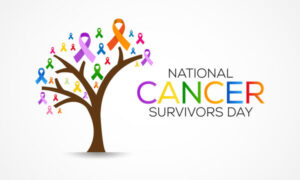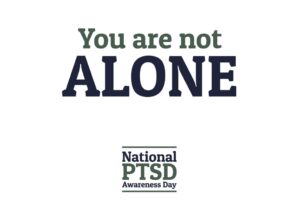
Health & Wellness

It’s summer and we all know what that means…it’s HOT
Melanoma: A Dangerous Skin Cancer
Melanoma Fact:
Only 20-30% of melanomas are found in existing moles, while 70-80% arise on “normal looking” skin.

Melanoma is a serious form of skin cancer that begins in cells known as melanocytes. While it is less common that basal cell carcinoma (BCC) and squamous cell carcinoma (SCC), melanoma is more dangerous because of its ability to spread to other organs more rapidly if it is not treated at an early stage.
What is a melanocyte?
Melanocytes are skin cells found in the upper layer of skin. They produce a pigment known as melanin, which gives skin its color. There are two types of melanin: eumelanin and pheomelanin. When skin is exposed to ultraviolet (UV) radiation from the sun or tanning beds, it causes skin damage that triggers the melanocytes to produce more melanin, but only the eumelanin pigment attempts to protect the skin by causing the skin to darken or tan. Melanoma occurs when DNA damage from burning or tanning due to UV radiation triggers changes (mutations) in the melanocytes, resulting in uncontrolled cellular growth.
What does melanoma look like?
Melanomas present in many different shapes, sizes and colors. That’s why it’s tricky to provide a comprehensive set of warning signs. Since detecting melanoma early is so vital, please learn the common signs, symptoms and early detection strategies on the Melanoma Warning Signs page. View more melanoma images on the Skin Cancer Pictures page as well.
How dangerous is melanoma?
Melanoma is usually curable when detected and treated early. Once melanoma has spread deeper into the skin or other parts of the body, it becomes more difficult to treat and can be deadly.
- The estimated five-year survival rate for U.S. patients whose melanoma is detected early is about 99 percent.
- An estimated 7,650 people (5,080 men and 2,570 women) will die of melanoma in the U.S. in 2022.
How widespread is melanoma?
- An estimated 197,700 cases of melanoma will be diagnosed in the U.S. in 2022.
- 97,920 cases will be in situ (noninvasive), confined to the epidermis (the top layer of skin), and 99,780 cases will be invasive, penetrating the epidermis into the skin’s second layer (the dermis).
- Of the invasive cases, 57,180 will occur in men and 42,600 will occur in women.
What are the 4 main types of melanoma of the skin?
Superficial spreading melanoma
What you should know: This is the most common form of melanoma.
How & where it grows: It can arise in an existing mole or appear as a new lesion. When it begins in a mole that is already on the skin, it tends to grow on the surface of the skin for some time before penetrating more deeply. While it can be found nearly anywhere on the body, it is most likely to appear on the torso in men, the legs in women and the upper back in both.
What it looks like: It may appear as a flat or slightly raised and discolored, asymmetrical patch with uneven borders. Colors include shades of tan, brown, black, red/pink, blue or white. It can also lack pigment and appear as a pink or skin-tone lesion (amelanotic).
Lentigo maligna
What you should know: This form of melanoma often develops in older people. When this cancer becomes invasive or spreads beyond the original site, the disease is known as lentigo maligna melanoma.
How & where it grows: This form of melanoma is similar to the superficial spreading type, growing close to the skin surface at first. The tumor typically arises on sun-damaged skin on the face, ears, arms or upper torso.
What it looks like: It may look like a flat or slightly raised, blotchy patch with uneven borders. Color is usually blue-black, but can vary from tan to brown or dark brown.
Acral lentiginous melanoma
What you should know: This is the most common form of melanoma found in people of color, including individuals of African ancestry.
How & where it grows: It often appears in hard-to-spot places including under the nails (subungual) and on the soles of the feet or palms of the hands.
What it looks like: It may appear as a black or brown area.
 Musician Bob Marley was diagnosed with acral lentiginous melanoma,
Musician Bob Marley was diagnosed with acral lentiginous melanoma,  which ultimately claimed his life at age 36. When a dark spot appeared under his toenail, Marley attributed it to a soccer injury. Eventually he was diagnosed with the disease but was not treated. His melanoma spread to other areas of his body and tragically cut his life short.
which ultimately claimed his life at age 36. When a dark spot appeared under his toenail, Marley attributed it to a soccer injury. Eventually he was diagnosed with the disease but was not treated. His melanoma spread to other areas of his body and tragically cut his life short.
Nodular melanoma
What you should know: This is the most aggressive type of melanoma. It accounts for 10 to 15 percent of all cases.
How & where it grows: The tumor grows deeper into the skin more rapidly than other types and is most frequently found on the torso, legs and arms, as well as the scalp in older men. It is usually invasive at the time it is first diagnosed.
What it looks like: Nodular melanoma is often recognized as a bump on the skin, usually blue-black in color, but not uncommonly can also appear as a pink to red bump.
CHECKING YOUR SKIN
It is important to regularly check your skin for signs of change to detect cancer early. It could save your life. A complete self-skin examination takes less than 5 minutes and is highly recommended to do monthly.
What you should look out for:
If you see something NEW, CHANGING or UNUSUAL, it could be early signs of skin cancer.
This includes:
- Changes in the size, shape and color of a mole, or bleeding, oozing or inflammation – particularly in moles that are over 6mm in diameter.
- A growth that increases in size and appears pearly, transparent, tan, brown, black, or multicolored.
- A spot or sore that continues to itch, hurt, crust, scab or bleed.
- An open sore that does not heal within three weeks.
You will need a full length mirror, a hand mirror, and good lighting.
Step 1: Face, Neck & Scalp
- Use a hand mirror to carefully check your face and neck, especially your nose, lips, mouth and ears — front and back
- Thoroughly inspect your scalp, using a blow-dryer and mirror to expose each section
Step 2: Arms & Hands
- Check your arms, then raise them one at a time, checking your underarms and forearms
- When examining your hands, look at palms, fingernails (without nail varnish) and between your fingers
Step 3: Torso
- Focus on your neck, chest and torso. Women should check underneath their breasts
- Check the rest of your abdomen
Step 4: Legs, Feet & Genitals
- Sit down and look at the front of your thighs, your knees and your shins
- Use your hand mirror to look at the backs of your legs, thighs and calves
- Examine the tops and soles of your feet, checking between the toes and your toenails (without nail varnish)
- Inspect your genital area
Step 5: Back & Shoulders
- Standing up, examine your back, shoulders and buttocks in a full-length mirror with the aid of a hand mirror
Hint: During your self examination, Check4Cancer recommends that:
- MEN should pay particular attention to their trunk
- WOMEN should carefully check their legs


June 6:
National Cancer Survivor’s Day
The first celebration of National Cancer Survivors Day was held on June 5, 1988. The style of commemoration has always been that of an open network, with local municipalities, hospitals, and other groups all staging such festivities as parades and rallies, individually but concurrently. According to the NCSD website, anyone can register an event and gain the support of the wider organization. The organization offers a range of resources, including a roster of speakers — medical professionals, major and minor celebrities, authors, and more — who are available to help host events in their respective towns and cities.
 NCSD celebrations have also included art exhibits, carnivals, contests, and testimonies by high-profile survivors. In 2008, the fanfare included a commencement by U.S. President George W. Bush side-by-side with the director of the National Cancer Institute.
NCSD celebrations have also included art exhibits, carnivals, contests, and testimonies by high-profile survivors. In 2008, the fanfare included a commencement by U.S. President George W. Bush side-by-side with the director of the National Cancer Institute.
Generally, official coverage of National Cancer Survivors Day is provided by the magazine “Coping with Cancer.” During the 2020 celebration, as the magazine reported, many events were canceled or changed to online-only or socially distanced versions, but the day still included a drive-through ‘red carpet’ celebration in Louisville, Kentucky with vehicles all decked out in pink and red; pink corsets and plumage donned in a parade by the New Orleans Pussyfooters in that city; a virtual Ribbon Walk in Fort Wayne, Indiana; and many more unique instances of coming together in solidarity with survivors.
The process for registering your own NCSD event is easy and streamlined on their web page, ncsd.org, so this coming June, why not join the ranks of survivors and allies in your hometown, in connection with the wider event? Make it a fun and meaningful day.
D-Day
The Normandy beaches were chosen by planners because they lay within range of air cover, and were less heavily defended than the obvious objective of the Pas de Calais, the shortest distance between Great Britain and the Continent. Airborne drops at both ends of the beachheads were to protect the flanks, as well as open up roadways to the interior. Six divisions were to land on the first day; three U.S., two British and one Canadian. Two more British and one U.S. division were to follow up after the assault division had cleared the way through the beach defenses.
of air cover, and were less heavily defended than the obvious objective of the Pas de Calais, the shortest distance between Great Britain and the Continent. Airborne drops at both ends of the beachheads were to protect the flanks, as well as open up roadways to the interior. Six divisions were to land on the first day; three U.S., two British and one Canadian. Two more British and one U.S. division were to follow up after the assault division had cleared the way through the beach defenses.
Disorganization, confusion, incomplete or faulty implementation of plans characterized the initial phases of the landings. This was especially true of the airborne landings which were badly scattered, as well as the first wave units landing on the assault beaches. To their great credit, most of the troops were able to adapt to the disorganization. In the end, the Allies achieved their objective.
June 12:
National Loving Day
Loving Day is an annual celebration held on June 12, the anniversary of the 1967 United States Supreme Court decision Loving v. Virginia which struck down all anti-miscegenation laws remaining in sixteen U.S. states. In the United States, anti-miscegenation laws were U.S. state laws banning interracial marriage, mainly forbidding marriage between two different races, until the Warren Court ruled unanimously in 1967 that these state laws were unconstitutional.
 Chief Justice Earl Warren wrote in the court majority opinion that “the freedom to marry, or not marry, a person of another race resides with the individual, and cannot be infringed by the State.”
Chief Justice Earl Warren wrote in the court majority opinion that “the freedom to marry, or not marry, a person of another race resides with the individual, and cannot be infringed by the State.”
Loving Day originated with the landmark U.S. Supreme Court case Loving v. Virginia, which invalidated laws prohibiting interracial marriage. The case was brought by Mildred Loving, a woman classified as “colored” under Virginia’s Racial Integrity Act of 1924, and Richard Loving, a white man, who first met when she was 11 and he was 17. He was a family friend and over the years they courted. After she became pregnant, they married in Washington, D.C., in 1958, when she was 18. Reportedly, Mildred did not realize that interracial marriage was illegal, and they were arrested a few weeks after they returned to their hometown north of Richmond, Virginia. They plead guilty to charges of “cohabiting as man and wife, against the peace and dignity of the Commonwealth”, and avoided jail time by leaving Virginia and agreeing not to return to the state for 25 years.
The Loving’s moved to Washington, D.C., and began legal action by writing to U.S. Attorney General Robert F. Kennedy. Kennedy referred the case to the American Civil Liberties Union. After the Warren Court unanimously ruled in favor of the young couple, they returned to Virginia, where they lived with their three children. In 1975, Richard Loving died in a car accident. Mildred Loving died May 5, 2008, at the age of 68. Each June 12, the anniversary of the ruling, Loving Day events around the country mark the advances of mixed-race couples and mixed-raced people.
Loving Day is not an officially recognized holiday by the U.S. government, despite attempts to make it so. Loving Day is the biggest multiracial celebration in the United States.
National Children’s Day
The second Sunday in June rewinds time for a moment for a celebration known as National Children’s Day in the United States.
#NationalChildrensDay
The day honors the children in our lives by slowing down our fast-paced lives, turning off the tech, and refocusing on the important things. Taking one day may not be enough, but using it as an opportunity to redirect our family’s lives may be an important step in a child’s life.
Children look up to the adults in their lives for guidance. While their personalities are unique, they develop their character as they spend time with you and me.
Cherish our children, spend time with them. Seize the opportunity to spend time with your children and grandchildren. Make it your mission to:
Start new traditions.
Explore the outdoors.
Tell family stories.
Be creative through art or music.
Teach them something new.
Open your heart to new ideas.
Listen to your children.
Seek adventure with your children.
Break out of old routines.
Pursue new opportunities with your children.
Share your adventures with your children using #NationalChildrensDay to share on social media.
National Children’s Day History
Reverend Dr. Charles Leonard of the Universalist Church of the Redeemer in Chelsea, Massachusetts started Children’s Day in 1856 as a special day to Baptize children. He originally named it Rose Day. In 1995, President Clinton proclaimed National Children’s Day as October 8th. He was later followed by President Bush in 2001 who declared the first Sunday in June as National Child’s Day. However, National Children’s Day is generally celebrated the second Sunday in June or October 8th.
June 19:
Father’s Day
 Father’s Day, in the United States, holiday (third Sunday in June) to honor fathers. Credit for originating the holiday is generally given to Sonora Smart Dodd of Spokane, Washington, whose father, a Civil War veteran, raised her and her five siblings after their mother died in childbirth. She is said to have had the idea in 1909 while listening to a sermon on Mother’s Day, which at the time was becoming established as a holiday. Local religious leaders supported the idea, and the first Father’s Day was celebrated on June 19, 1910, the month of the birthday of Dodd’s father. In 1924 U.S. President Calvin Coolidge gave his support to the observance, and in 1966 President Lyndon B. Johnson issued a proclamation that recognized the day. It became a national holiday in 1972, when President Richard Nixon signed legislation designating the third Sunday of June as Father’s Day.
Father’s Day, in the United States, holiday (third Sunday in June) to honor fathers. Credit for originating the holiday is generally given to Sonora Smart Dodd of Spokane, Washington, whose father, a Civil War veteran, raised her and her five siblings after their mother died in childbirth. She is said to have had the idea in 1909 while listening to a sermon on Mother’s Day, which at the time was becoming established as a holiday. Local religious leaders supported the idea, and the first Father’s Day was celebrated on June 19, 1910, the month of the birthday of Dodd’s father. In 1924 U.S. President Calvin Coolidge gave his support to the observance, and in 1966 President Lyndon B. Johnson issued a proclamation that recognized the day. It became a national holiday in 1972, when President Richard Nixon signed legislation designating the third Sunday of June as Father’s Day.
Although it was originally largely a religious holiday, Father’s Day has been commercialized with the sending of greeting cards and the giving of gifts. Some observe the custom of wearing a red rose to indicate that one’s father is living or a white rose to indicate that he is deceased. Other males—for example, grandfathers or uncles who have assumed parenting roles—are often also honored on the day. Some Roman Catholics have continued to observe the feast day of St. Joseph, on March 19, as a tribute to fathers.
Psalm 103:13: “As a father has compassion on his children, so the Lord has compassion on those who fear him.” Proverbs 22:6: “Start children off on the way they should go, and even when they are old they will not turn from it.”
Did you know?
According to the U.S. Census Bureau, the necktie is the most popular of all Father’s Day gifts.
The origin of the word dad may simply be baby talk – “The forms dada meaning ‘Father’…originating in infantile or childish speech”, says the Oxford English Dictionary.
There are 1.5 billion fathers worldwide. 66.3 million of those father’s are in the United States.
Father’s Day is the fifth-largest card-sending occasion in America with almost 100 million Father’s Day cards sent each year.
Only 50% of all Father’s Day cards are purchased for dads. Nearly 15% of Father’s Day cards are purchased for husbands. Other categories include grandfathers, sons, brothers, and uncles.
The Father’s Day card business will ring up about $780 million this year.
According to National Geographic, Father’s Day costs less than Mother’s Day – with individual consumers spending $94.54 and $138.36 respectively.
Famously Mark Twain said the following about his father: “When I was a boy of fourteen, my father was so ignorant I could hardly stand to have the old man around. But when I got to be twenty-one, I was astonished at how much he had learned in seven years”.
June 27:
National PTDS Awareness Day
PTSD in some form or another has long been documented in humans. The earliest known literature about the disorder is a poem from 50 BC. Hippocrates narrated a traumatic battle experience about a soldier who was haunted by PTSD-like combat flashbacks. PTSD has consistently been mentioned since then, notably during the Hundred Year’s War between England and France, and even in the literature of Shakespeare — including Romeo and Juliet.
 A new understanding of PTSD came with the Civil War in the 1800s, as the disorder became widespread in the traumatized country. PTSD was known under a variety of names, including “railway spine.” It was in 1915 that some understanding of PTSD was formally introduced into medical literature, under the name “shell shock.”
A new understanding of PTSD came with the Civil War in the 1800s, as the disorder became widespread in the traumatized country. PTSD was known under a variety of names, including “railway spine.” It was in 1915 that some understanding of PTSD was formally introduced into medical literature, under the name “shell shock.”
World War 1 threw the disease into the spotlight, and rudimentary treatments, like electric shock therapy, were attempted. It wasn’t until the 1950s that more modern treatments, like group therapy, were introduced.
The Vietnam War issued in, yet again, a new understanding of the disorder. This coincided with research done by psychologists on both Holocaust victims and rape victims, which helped prove that many kinds of trauma can lead to PTSD.
Today, it’s considered largely treatable, so we’ve made a lot of progress. The Senate recognized June 27 as National PTSD Awareness Day at the urging of Senator Kent Conrad. Conrad wanted to honor a North Dakota National Guard member who had committed suicide after two tours of duty in Iraq. In 2014, the entire month of June was designated National PTSD Awareness Month by the Senate.
On June 27, we talk about PTSD, a complex disorder caused by experiencing or witnessing trauma. The trauma necessary to cause PTSD can originate from many events — potentially an accident, combat, a natural disaster, or an assault — but there are other ways PTSD symptoms can arise. A trained professional must diagnose PTSD, based on symptoms like hypervigilance, mood swings, recurring and involuntary flashbacks to the trauma, and avoidance. The National Center for PTSD declared all of June to be PTSD Awareness month — you can help their campaign by educating yourself and others about the illness, and sharing help with those who might need it.
Becoming A Better Listener
The key to having better communication with family members is improving your listening skills.  Studies show that 70 percent of our communication time is spent listening. However, not enough of that listening time is spent really hearing and understanding what the other person is saying. By concentrating better and trying harder to relate to the person talking, we can train ourselves to become active, empathetic and understanding listeners.
Studies show that 70 percent of our communication time is spent listening. However, not enough of that listening time is spent really hearing and understanding what the other person is saying. By concentrating better and trying harder to relate to the person talking, we can train ourselves to become active, empathetic and understanding listeners.
Research demonstrates that job applicants are more likely to be offered positions when they allow the interviewers to do most of the talking. It is no wonder that most people value good listeners more than they do good talkers.
Listeners also have an advantage over talkers in that people can think approximately three times faster than they can talk, giving listeners extra time to ponder a talker’s message and prepare a response. Speech rate is roughly 100 to 150 words per minute; thinking rate is 250 to 500 words per minute.
Imagine a family member or friend is confiding in you about a personal problem, loss, or misfortune. Immediately, your mind begins searching for the right thing to say. You feel pressured to at least say something. More importantly, what you say must be the right thing, such as a comment or a bit of advice that provides comfort.
Too often, we become preoccupied with finding some magic formula or phrase. We do not realize that the magic is in our listening, not in what we say. The real comfort we provide is more in our compassion as listeners than in our skills as problem-solvers or counselors.
A common complaint that wives have is that their husbands do not listen carefully or pay close enough attention to what they are saying. A recent study found that one significant difference between happily and unhappily married couples had to do with listening and understanding. Spouses who felt they were listened to and understood regarded their marriage as happy. Husbands and wives who thought they were often ignored felt their marriages were unhappy.
Children especially need adults to listen carefully to them. Paying close attention when your children share experiences models good listening habits for them. It is not necessary or possible to provide a “this-is-what-you-should-do” response every time your child may complain.
Listen carefully to your child’s messages, and do not let your mind wander to what you may feel are more important, adult matters. Make what your child is saying to you the most important thing at the time.
Listening is an art that can be learned. Try these tips the next time a family member is talking to you. These strategies are ideal for the workplace and the classroom, as well.
- Motivate yourself to listen enthusiastically: Before the other person even begins speaking, tell yourself that you’re going to give this person and his or her message your full attention, with the potential reward being new knowledge and insight. Ask yourself what you can learn from this person.
- Learn to be an active listener: Be attentive to the other person’s concerns. Try hard to understand his or her point of view, and empathize with their experiences by “putting yourself in their shoes.”
- Refrain from judging or disagreeing: Instead, aim to understand.
- Put emotions aside: Try not to let feelings like anger or jealousy stand in the way of attentive listening.
- Give the talker incentives to open up: Make yourself available, listen carefully, and demonstrate your sincere eagerness to understand and hear their story. Use phrases like “Wow, go on!” or “That is very interesting.”
- Be patient: especially with talkers who have a difficult time communicating, such as young children: Show them respect by letting them fully express their thoughts and problems.
- Avoid distractions: Focus your attention on the person you are listening to, and maintain eye contact with them. Choose a location that is not noisy or disruptive. Pick a quiet, neutral locale for your discussion where you both feel comfortable.
- Do not interrupt the speaker: Doing so demonstrates a lack of respect for the talker and breaks their chain of thought, leading to a mixed or incomplete message. Interruptions may also keep the speaker from opening up to you further.
- Ask questions about anything you do not understand: Too often we simply nod our heads and pretend we comprehend or relate to the things the other person is saying, leading to a future breakdown of communication. Effective listening requires true interpretation and comprehension of the speaker’s message. Pick your spots carefully (so as not to interrupt the speaker), and ask for clarification.
- Coax the speaker to reveal more: Encourage sharing with questions like, “What are you thinking/feeling?” By reassuring the talker that you are genuinely interested and want to hear all the details, the person will feel more comfortable and convey a more complete message.
- Listen with your entire body: Show eagerness and empathy in your facial expressions. Nod your head to indicate that you understand. Use appropriate body language to demonstrate that the message is being received loud and clear.
- Watch for the speaker’s body language: Hand gestures, physical mannerisms, tone of voice and intensity of the eyes can reveal more than the actual words being spoken.
- Focus on listening, not responding: If you think too hard about what to say next, how the talker’s situation relates to your experience or how to solve the speaker’s problems while the person is still talking, you will zone out and not hear what they are saying.
- Use “I” statements rather than “you” statements: Instead of saying “You always treat me like a child,” say, “I don’t appreciate when you treat me like a child.”
- Do not give up on a poor talker: If the speaker is rambling, repeating themselves or losing your interest, try to be patient. Challenge the speaker to get to the point by asking specific questions like, “So what was the result?” or “What did you do next?”
- React to the message, not the messenger: Do not let your opinions or prejudgments of the speaker interfere with a sincere response. Repeat what the person said to you back to them in your own words to confirm the message they were trying to relate and demonstrate that you understood.

 Prep Time: 15 minutes
Prep Time: 15 minutes• 4-6 cups arugula/spinach/mixed salad greens, washed
• 1 cup strawberries, chopped
• 1 avocado, diced into cubes
• 1/3 cup feta cheese, crumbled
• 3 tablespoon sunflower seeds, unsalted
• 6 tablespoon olive oil
• 2 tablespoon balsamic vinegar
• ½ teaspoon Dijon mustard
• ½ teaspoon honey
• Optional: Drizzle aged balsamic along top of salad
1. Clean salad greens and place into large bowl.
2. Secondly, add strawberries, avocado, cheese.
3. Top salad greens with seeds.
4. Drizzle greens and toppings with Dijon balsamic dressing.
5. Finally, toss to combine.
Total Fat 34.9g
Cholesterol 11mg
Sodium 181mg
Carbohydrate 11.9g
Dietary Fiber 5.3g
Total Sugars 4.3g
Protein 4.5g

